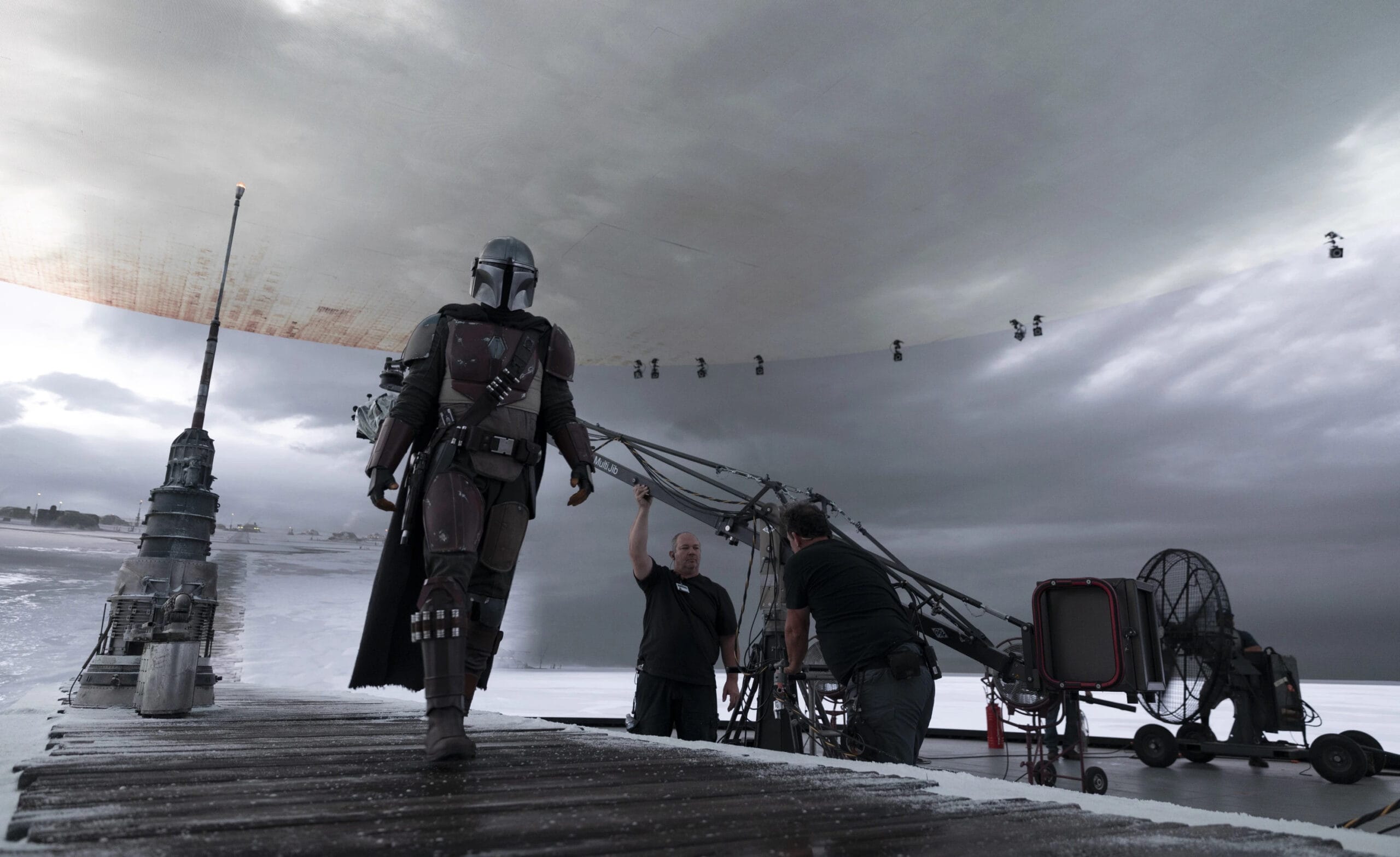Virtual Production to Become Industry Norm

What is Virtual Production?
Virtual Production (VP) is an evolution of established film and TV production methods with as many benefits as potential pitfalls. In essence, Virtual Production is where the digital and physical worlds meet. It lets directors work on a MoCap stage (Motion Capture Stage), but view a virtual environment and characters. Virtual production has been around for years (an early version was used in the Fellowship of the Ring), but Avatar was the pivotal moment. With Virtual Production stages being developed rapidly over the globe and the UK is leading this charge.
The UK has been at the forefront of developing Virtual Production technology. Mark Leaver (consultant for the DIT) has attested to this finding “The UK studio infrastructure has evolved very, very quickly to match the growing demand for Virtual Production”. Gone are the days where Virtual Production is only for large productions such as “The Mandalorian” Virtual Production techniques are already being used in broadcasting, particularly in news studios.
An Emerging Trend:
The pandemic has helped accelerate some of these trends as virtual production has provided an alternative method of filming in these times. Even before Covid, Virtual Production was moving into the mainstream. One reason could be that Hollywood is reaching the limits of efficiency using traditional production methods and why the predictability of the virtual environment is more reliable. Another is the vast cost saving that Virtual Production can bring. Not having to set up a base camp or pay for travel translates to direct cost savings but indirect can savings can add up.
VFX on a high-budget sci-fi or fantasy production can cost up to 20% of a film’s total budget but shooting in front of a LED screen significantly reduces overheads for compositing and rotoscoping. This is because Virtual Production flips the traditional process of making films on its head.
What Content Works Best For Virtual Production?
Virtual Production stages have found a natural home in filmmakers working on sci-fi and fantasy projects, but the technology easily translates to dramas, comedies and even adverts.
Virtual Production has opened up new areas which would have been tricky to film in prior to this technological advancement. Such as a remote location with adverse weather or a city where permits would be cost restrictive for the production. A good example of this would be the soon-to-be-released David Attenborough documentary at the end of the Cretaceous period. The BBC has stunningly recreated the final days of the dinosaurs, the documentary will utilise the latest in Virtual Production technology to reveal what happened on the last day of the dinosaurs.
Virtual Production Isn’t For Every Production:
For all Virtual Production’s advantages, it isn’t for every project. Many directors such as Denis Villeneuve (director of Dune), insisted on travelling to film. Villeneuve insisted on filming in the Middle East – to ensure that audiences could feel the heat and coarseness of the dessert.
Another factor to consider is that it may not always be cost-effective. Shooting a drama with mostly tight shots would be far too costly to shoot on a Virtual Production stage. Not to mention that the audience would most likely be able to distinguish the pixels of the LED screen.
The Future of Virtual Production:
Virtual Production has been making huge technological leaps in recent years (accelerated by the pandemic), with the UK investing serious money both into the development of these virtual stages and the training and education needed to train those coming into the industry.
The scope and opportunities within Virtual Production are undoubtedly exciting, especially as we look to the future of the UK media industry.







